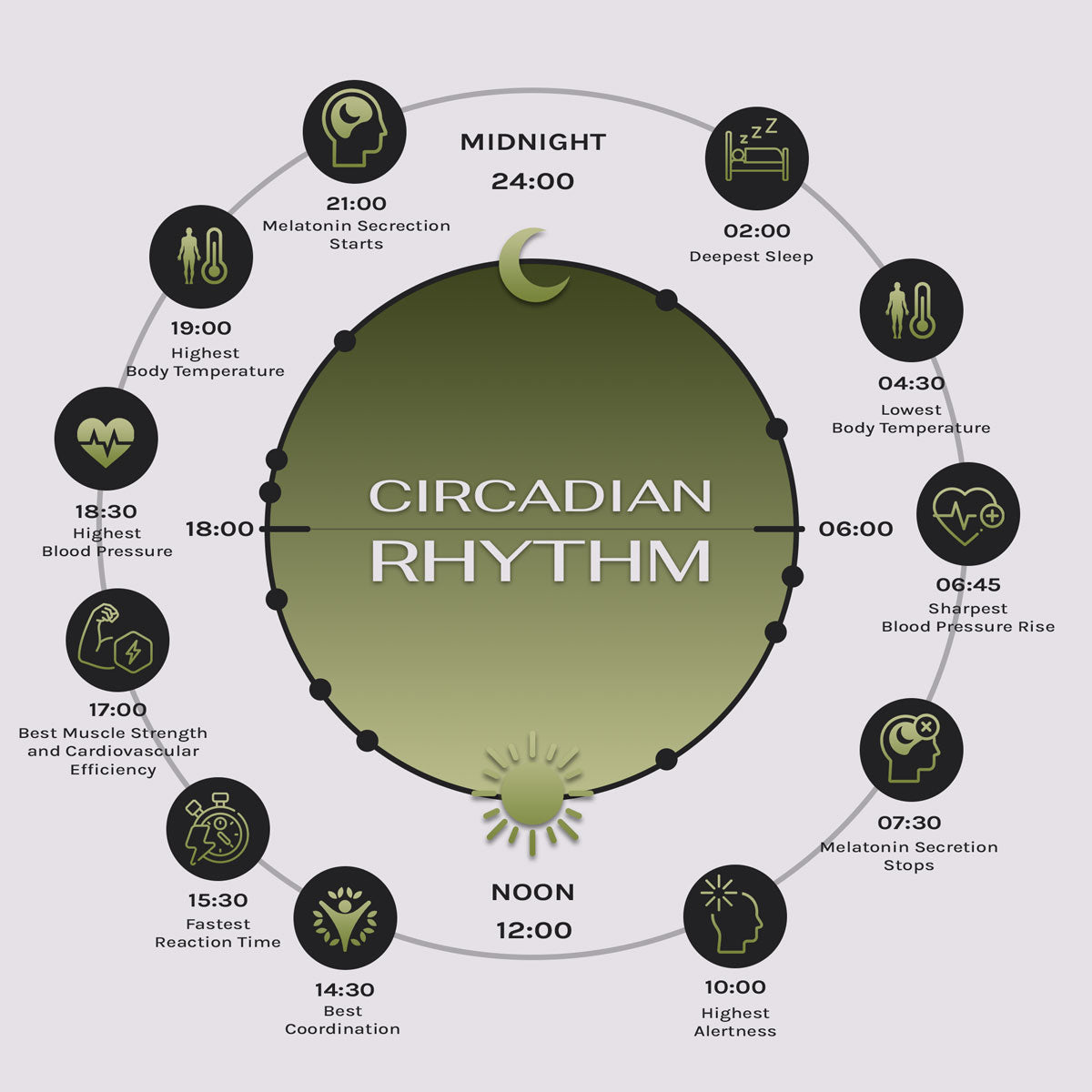Understanding the Body's 24-Hour Clock—and Why It Matters More Than Ever
In today’s fast-paced, always-on world, most of us have lost touch with one of the most essential systems keeping us healthy: our circadian rhythm.
You may have heard the term before—often in connection with sleep—but your circadian rhythm is far more than a sleep timer. It's a core biological function that influences nearly every aspect of your physical, mental, and emotional wellbeing. And when it’s out of sync, the effects ripple far beyond just feeling tired.
Let’s break down what circadian rhythm actually is, how it works, and why restoring it may be one of the most impactful things you can do for your long-term health.
What Is Circadian Rhythm?
Your circadian rhythm is your body’s internal 24-hour clock. It’s a natural cycle that governs everything from when you feel alert or drowsy, to when your hormones are released, your digestion is most efficient, and even when your cells repair and detoxify.
This rhythm is guided by a central “master clock” in the brain, called the suprachiasmatic nucleus (SCN). It responds primarily to light—especially the blue light found in sunlight—to tell your body what time it is.
But here’s the catch: modern life has radically changed the light signals we receive.
Why Circadian Health Is More Important Than Ever
In nature, the rise and fall of the sun governed our biology. Daylight signalled alertness, energy, and activity. Darkness told the body it was time to rest, recover, and produce melatonin—the sleep hormone that also acts as a powerful antioxidant and circadian signal.
Today, we spend over 90% of our time indoors. We're exposed to high levels of artificial blue light from screens, LED lighting, and devices—often late into the night. This disrupts our circadian rhythm by confusing our brain into thinking it’s still daytime.
The result?
-
Poor sleep quality
-
Daytime fatigue
-
Hormonal imbalance
-
Weakened immune function
-
Increased risk of anxiety, depression, and metabolic disorders
It’s not just about sleep—it’s about how your entire system operates.
The Science Behind Light and Circadian Timing
Light isn’t just something we see—it’s something our body responds to biologically.
-
Blue light (particularly wavelengths from 460–480nm) is the most potent regulator of your circadian rhythm. During the day, it's beneficial—helping you stay alert, focused, and productive.
-
At night, however, exposure to blue light suppresses melatonin production, delays your sleep cycle, and disrupts the timing of hormonal release, body temperature, and cellular repair.
Even low-level blue light exposure (like scrolling on your phone at night) has been shown in studies to suppress melatonin and fragment sleep.
How to Realign Your Circadian Rhythm
The good news? Your circadian rhythm is adaptable—and with the right strategies, you can realign it.
1. Get natural light early in the day
Start your day with 10–30 minutes of natural sunlight exposure, ideally before 9AM. This helps anchor your biological clock and boost morning serotonin.
2. Dim your environment at night
Limit overhead lighting and screen use after sunset. Use warm, low-lux lighting to support melatonin production.
3. Use blue light blocking glasses
Wearing scientifically-backed blue light blocking glasses—like Balterra’s Daytime, Night, and Night+ lenses—filters disruptive wavelengths at the right times. This helps support focus during the day and protect your circadian rhythm at night.
4. Keep a consistent sleep-wake schedule
Aim to wake and sleep at the same time every day—even on weekends. Consistency helps your body stay in rhythm.
5. Avoid caffeine late in the day
Caffeine can delay your internal clock. Avoid it at least 6–8 hours before bed.
The Balterra Approach to Circadian Wellness
At Balterra, we believe circadian health is the foundation of holistic wellness.
Our lens technology is engineered to protect your rhythm across every phase of the day:
-
Daylight (Yellow Lens): Blocks 97% of high-energy blue light for screen-heavy environments—reducing eye strain and fatigue.
-
Night (Amber Lens): Blocks up to 95% of blue light, ideal for low-light, post-sunset environments without harsh colour distortion.
-
Night+ (Red Lens): Blocks 99.9% of blue and over 97% of green light for total circadian protection during high-exposure situations—TV, phones, downlights, and screens.
Because restoring your rhythm shouldn’t mean sacrificing design, comfort, or modern life.
Final Thoughts
Your circadian rhythm isn’t optional—it’s essential.
By understanding and respecting your body's internal clock, you can unlock better sleep, sharper focus, deeper energy, and stronger long-term health.
And it all starts with light.
Balterra is here to help you live in rhythm—with science, style, and intention.

